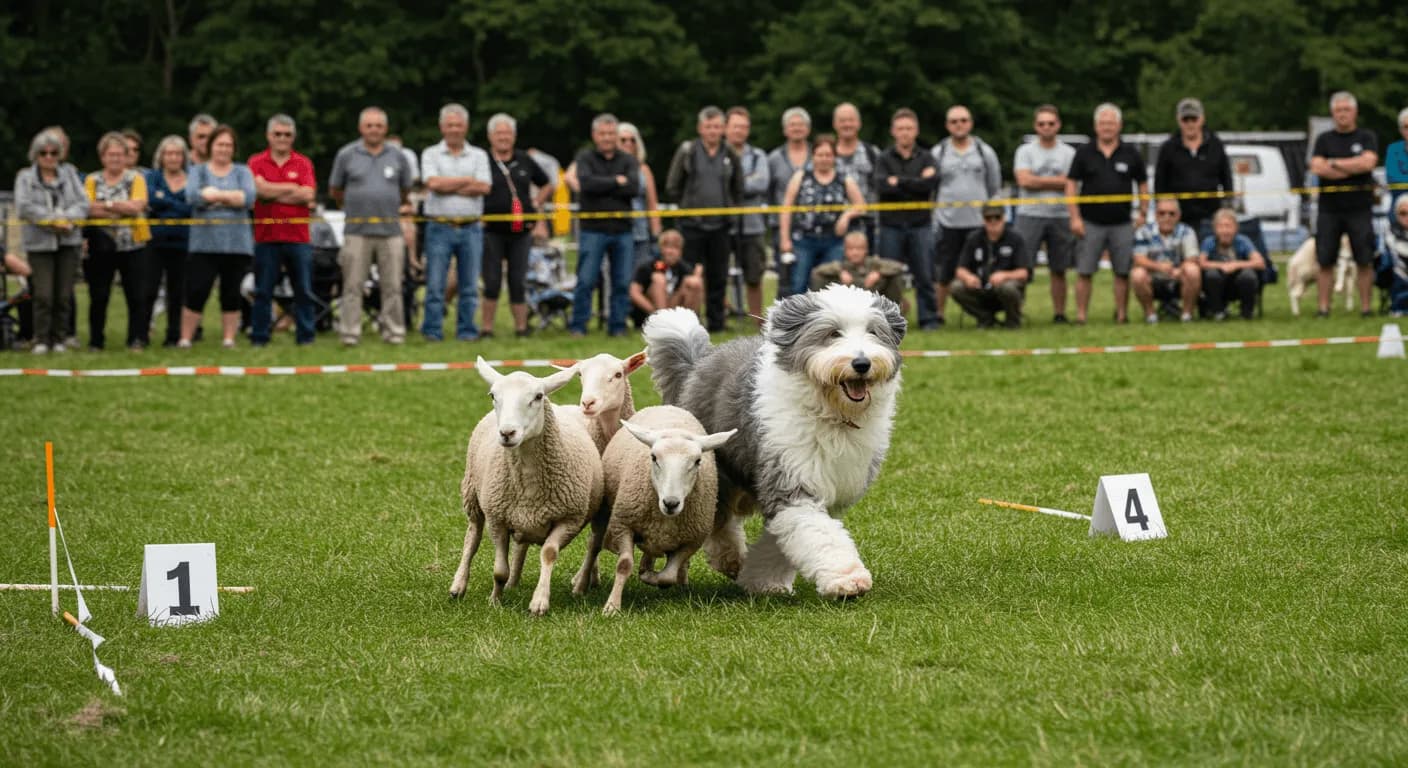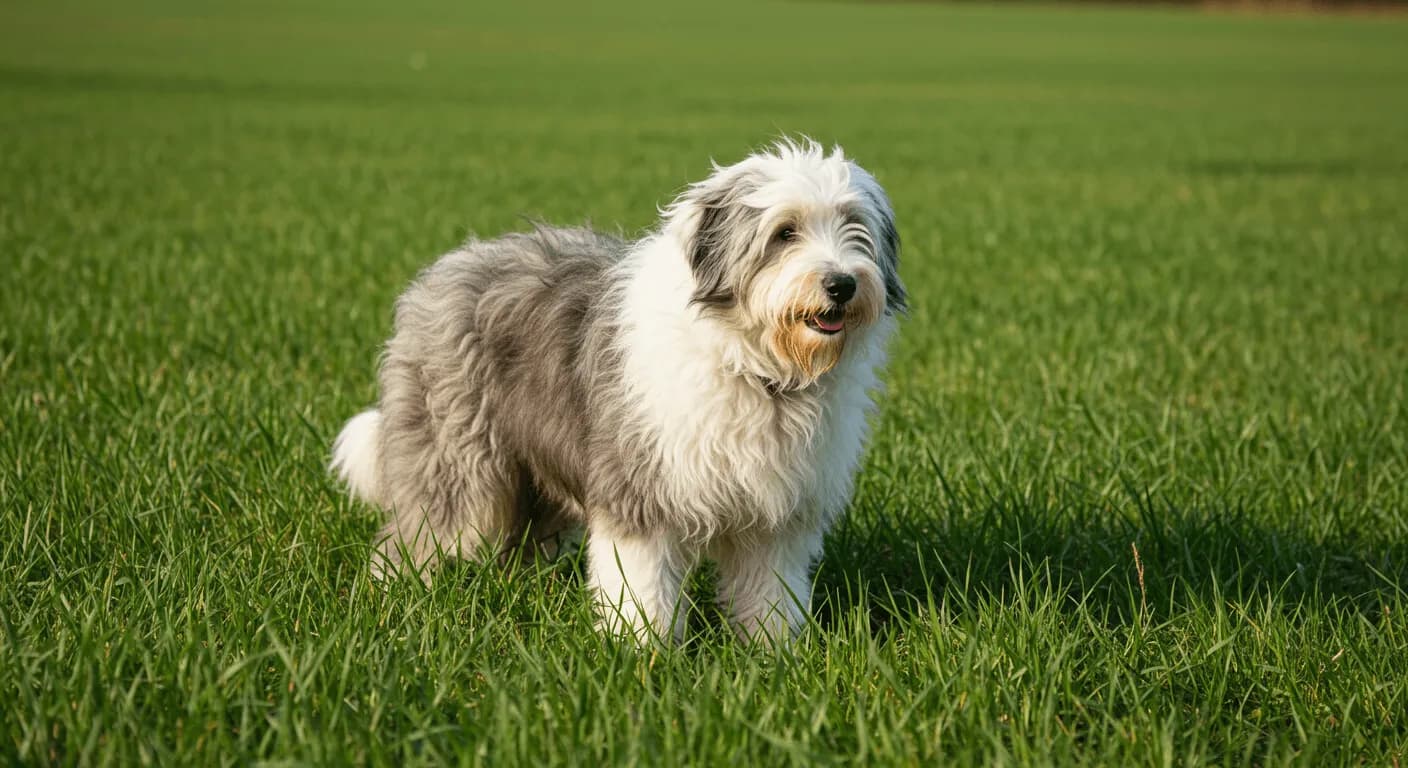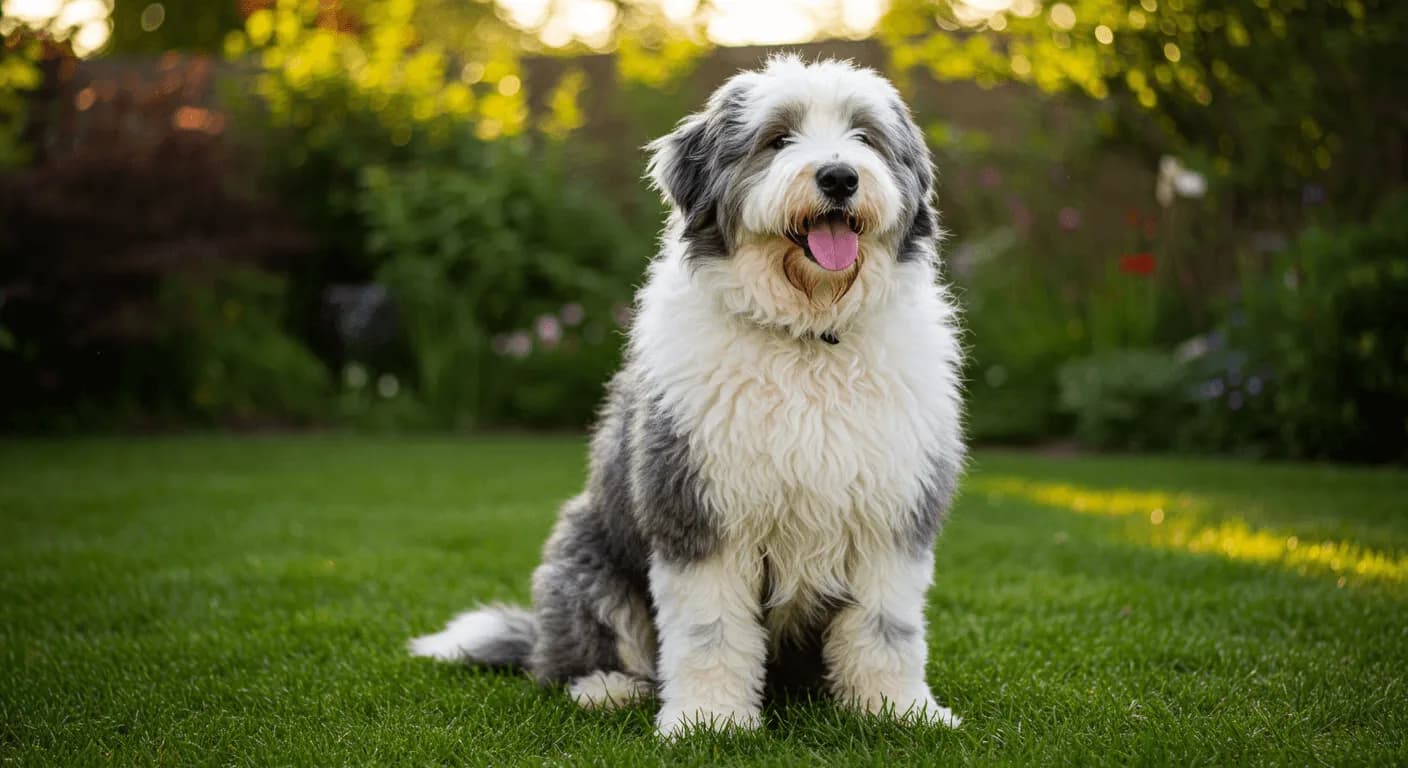The Old English Sheepdog is a breed that turns heads with its unmistakably shaggy coat, strong build, and affable personality. But behind the iconic “bear-like” look lies a rich and fascinating story about heritage, function, and evolution. In this article, you’ll journey through the detailed history and origin of the Old English Sheepdog—from its early beginnings to how and why it was developed, where it came from, and how it earned its endearing name.
You'll discover:
- Where the Old English Sheepdog came from
- What country it originated in
- When and why it was first bred
- What it was originally used for
- The etymology and cultural meaning behind its breed name
- Its influence across centuries and legacy today
Let’s dive deep into the Old English Sheepdog history and origin.
The Earliest Known Ancestors of the Old English Sheepdog
The precise ancestry of the Old English Sheepdog remains something of a puzzle even to canine historians. While the official breed is believed to have formed in England during the 18th century, many contend that its roots trace further back to herding breeds of medieval and possibly even ancient times.
Early herding dogs—closely linked to old European sheepdogs such as the Bearded Collie, Scotch Collie, Briard, and possibly even extinct Russian Owtchars—are believed to be in the breed’s genetic heritage. These dogs had:
- Dense shaggy coats
- Strong work drive
- High intelligence and endurance
- Herding instincts
Genetic and historical assessments suggest purposeful breeding from these dogs to develop the Old English Sheepdog we know today.

Where the Old English Sheepdog Came From
To understand where the Old English Sheepdog came from, you’ll need to look back at the British rural southwest and western regions of England—primarily Devon, Somerset, and Cornwall—where pastoralism was a way of life.
Original Native Landscape
The Old English Sheepdog evolved in a setting filled with:
- Rolling pastures
- Steep hills
- Wet, changeable weather
- Free-grazing herds
These demanding environmental factors influenced the kind of dog needed. Farmers required dogs that were:
- Large and physically durable
- Agile with tough feet for navigating rough, uneven terrain
- Weather-resistant, with rich coats to withstand rain and cold
What Country the Old English Sheepdog Came From
England is the answer to what country the Old English Sheepdog came from. More specifically, southern and southwestern English farming communities needed a drover’s dog that could herd livestock over miles of difficult countryside and even escort them to market.
When the Old English Sheepdog Was First Bred
While exact dates may vary across references, it’s widely accepted that the Old English Sheepdog was first bred in the late 1700s to early 1800s.
- First known mentions of the Old English Sheepdog appear in agricultural journals and livestock planning materials from the early to mid-19th century.
- It wasn't until about 1873 that the Old English Sheepdog was showcased at a dog show.
- The breed was officially recognized by The Kennel Club (UK) in 1888.
This timeline represents the period when the breed was both stabilized and standardized, with consistent characteristics such as:
- A profuse double coat
- Broad, square build
- Unique rolling gait
How the Old English Sheepdog Was Developed
The breed did not emerge out of isolated breeding decisions but rather a cluster of regional demands and shepherd habits over time. Here's how the Old English Sheepdog was developed:
- Farmers used Bearded Collies and other local herding breeds with endurance and adaptability.
- Crosses were performed based on utility rather than looks.
- Dogs that were:
- Intelligent
- Strong
- Loyal
- Cold-resistant
were selectively bred together.
- With time, a distinct type emerged—the early ancestor of today's breed.
Though show breeding refined the dog’s appearance later, the early Old English Sheepdog bloodlines history reflects a highly functional working animal shaped directly by its role.
What the Old English Sheepdog Was Bred For
The original function of the Old English Sheepdog gives crucial insight into understanding the breed. Contrary to today’s fluffy television appearances, this breed was a tireless worker.
The dogs were bred to be drover dogs, which means their job was to drive sheep and cattle to far-off market towns. In fact, because their work was essential to rural commerce, farmers often docked the tails of these dogs—a symbol of their working status.
Specific Tasks Included:
- Driving livestock over rough roads, sometimes over 100 miles
- Protecting the herd from predators or theft
- Navigating terrain, weather, and long days
- Working independently or under verbal cues from a distance
The Old English Sheepdog played a key role in agricultural economics, helping rural families successfully deliver their livestock to town in sellable condition.
The Etymology of the Breed Name
Curiously, the name "Old English Sheepdog" is relatively new despite the breed being older. Let’s explore how the Old English Sheepdog got its name:
- The “Old” part reflects not the dog’s lifespan or age but its historical reputation and archaic working status.
- “English” simply denotes its national origins.
- “Sheepdog” categorizes its function: a sheep-herding and droving canine.
In earlier times, it was often called the "Bobtail" due to the tale-docking custom that marked working status (which exempted owners from taxes during that era). This act of docking was both practical and symbolic.
Cultural Meaning
In the rural folklore and tradition of England, the Old English Sheepdog became symbolic of rugged work ethic, loyalty, and endurance, representing both pastoral charm and robustness.
Historical Impact and Legacy
Over time, the Old English Sheepdog’s bloodlines history and physical traits changed as its role evolved. With the decline of droving due to modern transport, the breed began transitioning into a companion and show dog.
Its Impact Over Time Can Be Seen In:
- Popularity in 19th-century dog shows, especially after being featured in the 1873 Birmingham Dog Show
- Its introduction to the United States in the 1880s, when Boston industrialists began breeding them for status and companionship—thus marks when the Old English Sheepdog came to America
- Increased visibility in 20th-century pop culture, from movies to commercials, highlighting its distinct coat and gentle charm

Recognition in Historical Periods
- 1888: Official recognition by the UK Kennel Club
- 1905: American Kennel Club officially recognized the Old English Sheepdog
- 1950s–1970s: Surge in global popularity
- 1980s onward: Iconic breed in advertising and media (e.g., Dulux paint mascot in the UK)
Influence on Human Activities
Today’s Old English Sheepdog is beloved for its charm, intelligence, and sweet demeanor. Though no longer widely used in herding, it continues to contribute through:
- Therapy and emotional support roles
- Obedience and agility sports
- Representation in breed preservation
Its history is a profound example of how function crafts form and how cultural values shape breeds over centuries.

Fast Facts Recap
- What country the Old English Sheepdog came from: England
- When it was first bred: Late 1700s to early 1800s
- How it was developed: Through selective crossing of working herding dog breeds
- What it was bred for: Driving sheep and cattle across long distances
- How it got its name: Reflecting its heritage, job function, and docked tail
To Summarize Key Points:
- The Old English Sheepdog originated in rural western England.
- It was first bred to drive livestock on long journeys.
- Its breed name reflects both history and function.
- It transitioned from a rugged farmhand to a beloved family and show dog.
- The breed’s popularity in the U.S. and Europe grew rapidly after its introduction in the late 19th century.
Highlights of the Old English Sheepdog's Evolution:
- Large-scale drover’s work in the 18th and 19th centuries
- Transition to dog shows and companion status by the late 1800s
- Peak popularity in the mid-20th century
- Continuation as a registered breed with vibrant heritage into the 21st century
Stay tuned for the concluding section where we reflect on the Old English Sheepdog’s lasting legacy today and how it adapts in a rapidly modern world.
Conclusion
The Old English Sheepdog stands as a proud symbol of how purpose, environment, and human need shape the development of a breed. Originating from the lush and rugged farmlands of southwest England, it was a dog bred not for looks but for hard labor and reliability. Its transformation from a drover’s indispensable companion to a beloved show dog and family pet speaks volumes about the breed’s adaptability, charm, and enduring value.
From its early genetic roots in herding breeds to its formal recognition in elite canine circles, every chapter of the Old English Sheepdog's history is steeped in meaningful purpose and tradition. Whether driving sheep across the English countryside or lounging in a modern home, the breed continues to embody the traits that first made it exceptional—intelligence, loyalty, strength, and a heartwarming personality.
As a living legacy, the Old English Sheepdog not only reminds us of a pastoral way of life but also proves that dogs with working roots can thrive across centuries, cultures, and continents. Its story is a tribute to the bond between humans and canines, and to how carefully bred traits can create a dog as enduring as it is endearing.



